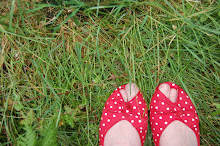Saturday 30 October 2010
Ai Weiwei at Tate Modern
Ai Weiwei's new Tate Modern Turbine Hall installation, Sunflower Seeds, is made up of millions of what appear to be sunflower seed husks, but are in fact intricately hand-crafted porcelain imitations. Each seed has been painstakingly sculpted and painted by skilled craftspeople working in small-scale workshops in Jingdezhen, China, before being brought together in this work which explicitly invites us to think more deeply about what it means for something to be 'Made in China' and the related notions of import and export, and cultural or economic exchange.
The artist's original intention for the piece was that the audience would be able to walk across the expanse of seeds, to sit down amongst them, to pick them up and to look at them closely. However, Tate visitors have now been stopped from walking over the seeds because of health and safety concerns: the fear is that Tate staff might be at risk of respiratory problems from continued exposure to the dust created as people walked over them.
Visitors can still look at the seeds from a distance, but there's no doubt that this radically changes the artwork itself. The question is, is this even the same artwork if we can't interact with it in the way the artist intended?
Weiwei is said to be 'disappointed' by the decision, and when I visited, I felt disappointed too. The individual seeds are beautiful in their own right, and the overall vista is pleasingly minimal, but the installation as a whole now feels about as engaging as a large-scale gravel drive. For me, the best thing about the installation was the trail of ghostly footprints across the surface of the sunflower seeds, almost like tracks through snow. They acted as a little reminder that there is more to this artwork than we, for now at least, are able to experience.
Subscribe to:
Post Comments











0 comments:
Post a Comment